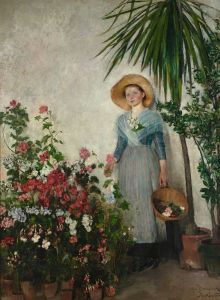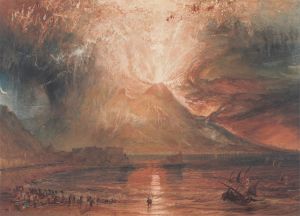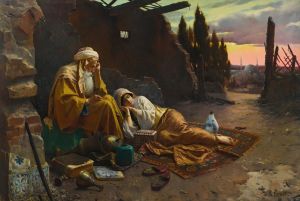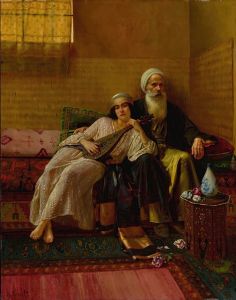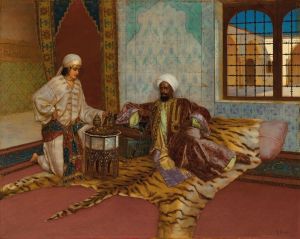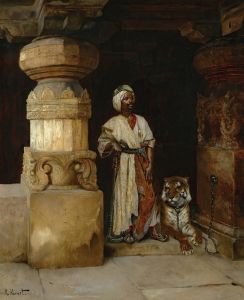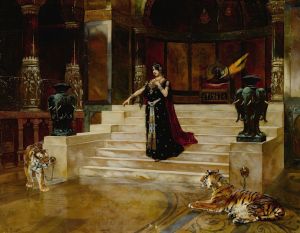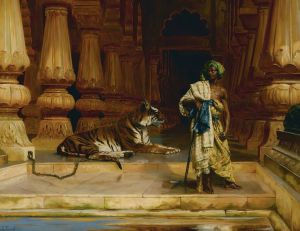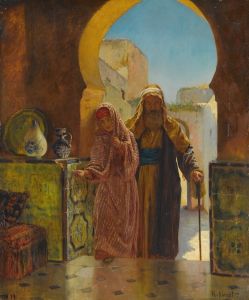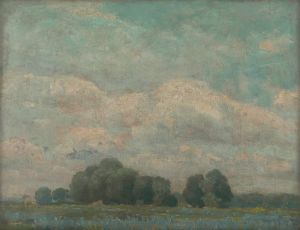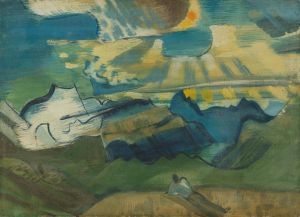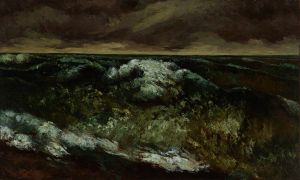
L’étang sacré
A hand-painted replica of Rudolf Ernst’s masterpiece L’étang sacré, meticulously crafted by professional artists to capture the true essence of the original. Each piece is created with museum-quality canvas and rare mineral pigments, carefully painted by experienced artists with delicate brushstrokes and rich, layered colors to perfectly recreate the texture of the original artwork. Unlike machine-printed reproductions, this hand-painted version brings the painting to life, infused with the artist’s emotions and skill in every stroke. Whether for personal collection or home decoration, it instantly elevates the artistic atmosphere of any space.
Rudolf Ernst (1854–1932) was an Austrian painter known for his Orientalist works, which often depicted scenes inspired by the cultures, architecture, and daily life of the Middle East, North Africa, and the Ottoman Empire. His paintings are characterized by meticulous attention to detail, vibrant colors, and a romanticized portrayal of exotic settings. Among his works is L’étang sacré (translated as The Sacred Pond), a painting that exemplifies Ernst's fascination with Orientalist themes.
L’étang sacré portrays a serene and idealized scene, likely inspired by Ernst's interpretation of sacred or tranquil spaces in Eastern cultures. The painting features a richly detailed environment, with architectural elements, lush vegetation, and water playing a central role. Ernst's use of light and shadow enhances the sense of calm and reverence in the composition. The figures in the painting, often dressed in traditional garments, contribute to the narrative of a sacred or contemplative moment, though their specific identities or cultural affiliations are not explicitly documented.
Rudolf Ernst was part of a broader movement of 19th-century European artists who were influenced by Orientalism, a trend that sought to depict the "exotic" and "mystical" aspects of the East. This movement was fueled by increased travel, trade, and colonial expansion, which brought European artists into contact with new cultures and landscapes. However, it is important to note that Orientalist art often reflected a Western perspective and idealized interpretation rather than an accurate or authentic representation of the cultures it depicted.
The exact historical or cultural context of L’étang sacré is not well-documented, and there is limited information about the specific inspiration or location that Ernst may have drawn upon for this work. As with many Orientalist paintings, the scene is likely a composite of elements drawn from Ernst's imagination, influenced by his exposure to Eastern art, architecture, and decorative motifs.
Rudolf Ernst's works, including L’étang sacré, are appreciated for their technical skill and aesthetic appeal, but they are also studied within the context of Orientalism and its implications in art history. Today, his paintings are held in private collections and occasionally appear in exhibitions or art auctions, where they continue to attract interest for their intricate detail and historical significance within the Orientalist genre.






